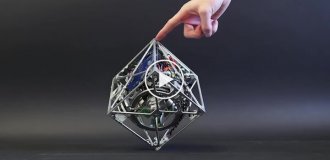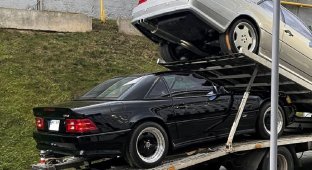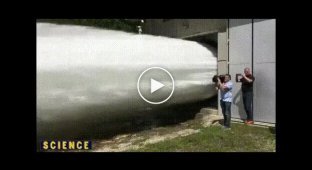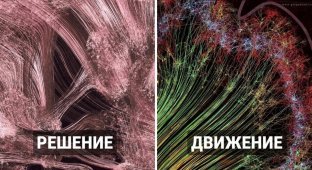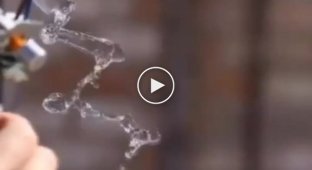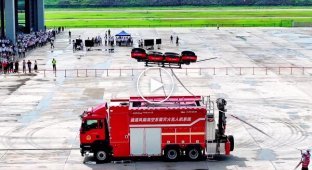An amateur engineer built a camera in his garage that shoots at 2 billion frames per second (3 photos + 3 videos)
Category: IT technologies, PEGI 0+
29 October 2025
Brian Heidet demonstrated the camera he built that records 2 billion frames per second. He used it to capture the movement of light. 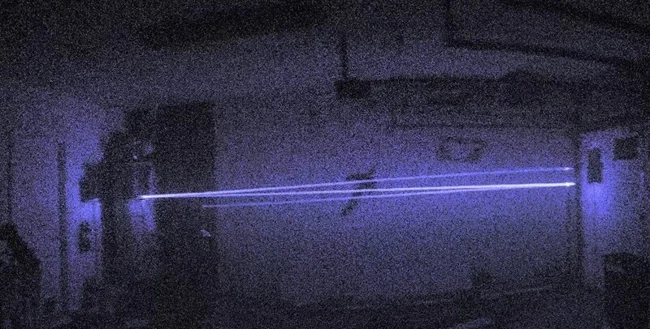
In his garage, YouTuber Brian Heidet, known online as AlphaPhoenix, created a camera capable of recording at two billion frames per second. This incredible speed allows it to capture the movement of light in the air. Heidet demonstrated the result of his work in a video published on October 17, which shows light rays moving in slow motion. This setup allows viewers to see what was previously only theoretical knowledge: the speed of light, approximately 30 centimeters per nanosecond, frozen in individual frames.
The enthusiast's homemade camera uses a powerful laser beam, whose beam crosses the garage, bounces off a mirror, and zigzags between parallel mirrors before reaching the wall. Fog particles in the air scatter the light, making it visible to the sensor. At two billion frames per second, the beam of light transforms into a mesmerizing spectacle, behaving in a strange, almost fantastical manner.
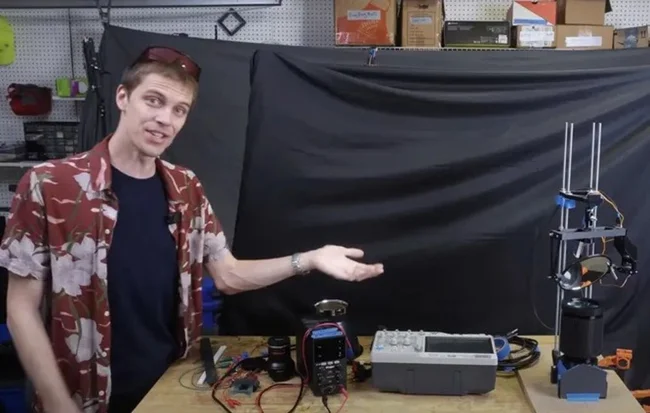
The YouTuber had previously built a camera capable of achieving one billion frames per second in 2024, but to achieve the new record, he had to completely redesign the system. He improved the motors for greater precision, enhanced the optics for sharper images, and redesigned the software to process massive amounts of data in real time. These improvements allowed the camera to capture the movement of light like never before.
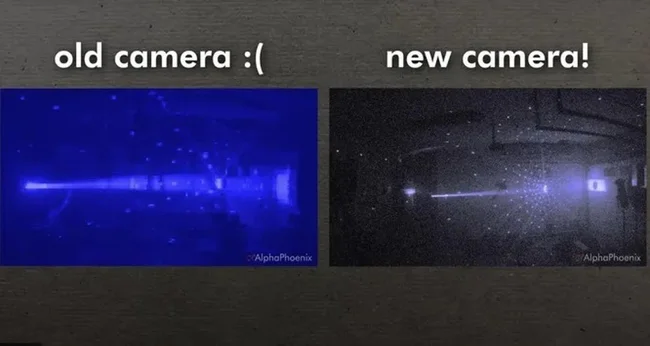
Left: A frame from the camera at 1 billion frames per second; On the right is a frame rate of 2 billion frames per second.
The camera's position affects how the light appears. When positioned directly behind the laser, the outgoing beam appears to creep, while the returning light appears almost instantaneous. This is not a violation of the laws of physics. The effect occurs because light reflected from particles near the camera reaches the sensor faster than light reflected from more distant particles. When Haydet moves the camera to the other side of the garage, the effect is reversed: the distant light appears to arrive instantly, while the nearby light appears to lag.
Capturing a complete image at 2 billion frames per second is impossible with conventional technology. Haydet solved this problem by using a small mirror mounted on a gimbal to direct the laser light to a single, highly sensitive sensor. Each such movement records one pixel, which are then combined to form the full image. This method is slow but extremely precise, effectively simulating the operation of a multi-million-dollar camera with thousands of synchronized sensors. To achieve this level of precision, Haydet replaced standard servomotors with components featuring high-precision encoders and timing belts that control the mirror's movement to within a fraction of a degree. Every detail matters, as even the slightest deviation can ruin the image.
The system's electronics are no less complex. A photomultiplier tube converts incoming photons into electrical signals, which are transmitted via coaxial cables to an oscilloscope that records two billion samples per second. The developer devised an ingenious way to reduce noise by transmitting the photomultiplier signal and the sync pulse along a single cable, carefully timing their independent arrivals. This combination of optics, electronics, and software creates the seamless illusion of recording full frames at record speed.











